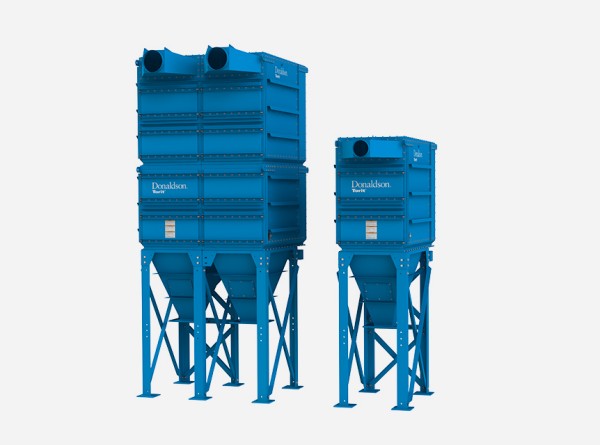In the world of pet food production, dust control is both critical and challenging. Dust in this setting isn't just a nuisance – it can impact product quality, employee safety, and even lead to combustible dust issues. Because of the nature of sticky or agglomerative dust, traditional dust collectors often struggle.
Pet food manufacturing dust, or challenging dust, is defined as one that is difficult to remove from the filter during cleaning and difficult to remove from the dust collector. It’s not just pet food processing plants that create sticky dust. Sticky or agglomerative dust can come from industries that process grains, additives, pharmaceuticals, sand, cement, personal care products, and many more.
Pet food plants create dust due to the dry ingredients and the processing involved. The dust comes from various sources like grains (corn, wheat, etc.), meat meals (chicken, fish, etc.), and additives (vitamins, minerals) and can present safety and health hazards. The pet food itself is safe, however, inhaling dust particles can irritate the lungs and potentially lead to respiratory problems.
Grain dust, a common pet food component, is highly combustible. When suspended in air, it can create an explosion hazard if an ignition source is present.
There are also food safety concerns as excessive dust can lead to contamination of food products and affect product quality. Contamination can introduce bacteria or other harmful microbes, reducing shelf life or even causing foodborne illness in pets. Dust can affect the taste and texture of pet food, impacting palatability.
You May Like...
In addition, there is the general issue of sanitation that arises with challenging dusts. Dust can settle on equipment and surfaces, creating space for bacteria and other contaminants. This can make it difficult to maintain a clean and sanitary working environment, potentially leading to product recalls or regulatory violations. Excessive dust can create a hazy environment, impacting visibility and increasing cleaning burdens.
Pet food dust often presents the specific problem of being sticky or agglomerative (clumping together). This can also be referred to as: tacky dust, cohesive dust, and adherent dust. This makes it difficult for traditional dust collectors to function effectively. Standard filters can quickly clog with sticky dust, reducing efficiency and requiring frequent cleaning or replacement. Sticky dusts tend to create dust cakes that harden and cling to filters which makes them difficult to dislodge when pulse cleaning.
Light and fluffy challenging dusts can be pulsed off and quickly “re-entrain” on the filters during cleaning which means the filter is never fully cleaned. Small and uniform dusts can depth load media and create a strong, consistent dust cake that is difficult to manage.
Some dust collector features that can help with managing agglomerative dust include high inlet with downflow air pattern, optimized inlets with baffle plates to knock down heavier dust, envelop style filters for better cleaning, enhanced pulse cleaning systems, increased spacing between filters for better dust dropout, and minimal ledge design. There are many more features and designs that can help as well – just connect with your Donaldson representative to describe your specific needs.
If you are experiencing agglomerative dust challenges, Donaldson offers a solution specifically designed to tackle dust in a pet food production facility: The Dalamatic® G2 Baghouse Dust Collector.
The Dalamatic G2 can handle sticky dust because of its patented Dura-Life™ envelope-shaped bag filters. This unique design allows for greater bag movement during the cleaning cycle, effectively dislodging even the most stubborn sticky dust. This translates to improved filtration efficiency, reduced maintenance time and costs, and ultimately, a cleaner production environment.
In addition, compressed air usage is a major factor in a dust collector's operating expense. The Dalamatic G2 addresses this concern with its reduced compressed air consumption. This translates to significant energy savings over time. The Radial Seal filter design streamlines filter changes by significantly reducing the number of required steps. This translates to less downtime and increased productivity.
Resources






